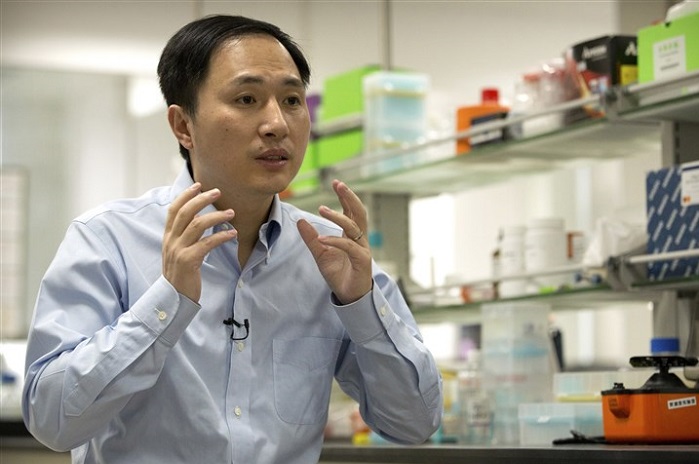An alarming new report from China claims twin girls were born this month after a scientist genetically altered their DNA.
The twins, Lulu and Nana, are believed to be the first genetically-modified human beings to be born, India Today reports.
He Jiankui, the Chinese scientist who claims to have conducted a successful experiment on the twins, told the AP that he altered the girls’ DNA when they were embryos. He said he tried to create a new trait to make the girls’ bodies HIV resistant.
Already, scientists across the world are expressing skepticism and alarm about He’s human experimentation. Even if He did successfully edit the girls’ DNA, there is no way of knowing the future effects on the twins or their potential children.
Dr. Kiran Musunuru, an expert on gene editing at the University of Pennsylvania, slammed the experiment as dangerous.
It is “unconscionable … an experiment on human beings that is not morally or ethically defensible,” Musunuru said.
But He countered the concerns by claiming he feels a “strong responsibility” about using his skills to end the growing HIV problem in China.
“I feel a strong responsibility that it’s not just to make a first, but also make it an example,” He told the AP. “Society will decide what to do next.”
Click Like if you are pro-life to like the LifeNews Facebook page and receive the latest pro-life news.
His experiment has not been verified independently, nor has it been published in a journal, according to the reports. However, a U.S. scientist also was involved in the project: Professor Michael Deem, of Rice University in Texas. Deem was He’s adviser when he studied in the U.S. He also attended Stanford University before returning to China, where he now runs a lab at Southern University of Science and Technology of China in Shenzhen and two genetics companies, according to the report.
He described his experiment to the AP:
The gene editing occurred during IVF, or lab dish fertilization. First, sperm was “washed” to separate it from semen, the fluid where HIV can lurk. A single sperm was placed into a single egg to create an embryo. Then the gene editing tool was added.
When the embryos were 3 to 5 days old, a few cells were removed and checked for editing. Couples could choose whether to use edited or unedited embryos for pregnancy attempts. In all, 16 of 22 embryos were edited, and 11 embryos were used in six implant attempts before the twin pregnancy was achieved, He said.
Tests suggest that one twin had both copies of the intended gene altered and the other twin had just one altered, with no evidence of harm to other genes, He said. People with one copy of the gene can still get HIV, although some very limited research suggests their health might decline more slowly once they do.
He used CRISPR, a DNA editing tool that bioethicists have long feared could be used to create “designer babies.” No one yet knows what DNA editing could mean for human beings or their offspring who inherit the modified DNA.
“These mutations could be passed down through the germline to future generations with unknown implications for everyone,” Charlotte Lozier Institute Dr. David Prentice wrote previously.
But scientists have been tinkering with the technology anyway. In 2017, Oregon scientists said they successfully genetically modified human embryos with CRISPR. In that experiment, however, the embryos were created and then destroyed.
David Albert Jones, director of the Anscombe Bioethics Centre in England, previously summed up the problems with this form of human experimentation.
“Instead of treating existing human beings in ways that respect their rights and do not pose excessive risks to them or to future generations, we are manufacturing new human beings for manipulation and quality control, and experimenting on them with the aim of forging greater eugenic control over human reproduction,” Jones wrote.








